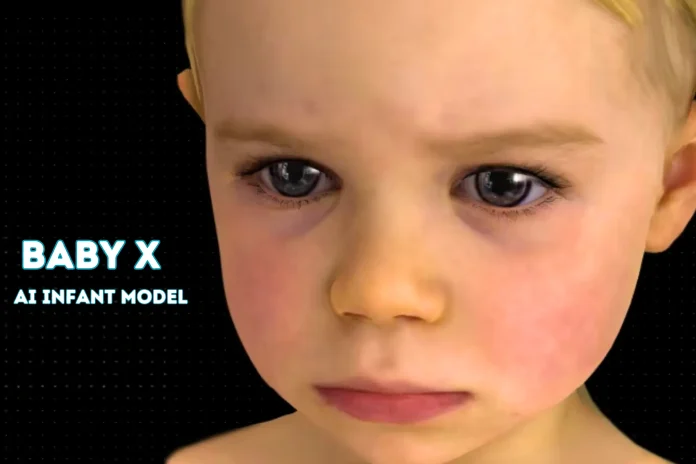AI is progressing quickly, breaking boundaries and moving into undiscovered territories. One area of exploration is the development of AI models that simulate human infants. Baby X, created by Dr. Mark Sagar and his team at the Laboratory for Animate Technologies at the University of Auckland, is a pioneering example.
A Lifelike Virtual Infant
Baby X is not simply a computer program or a static animation. It’s a complex AI system designed to mimic the behaviors and development of a human baby from 18 months of age. Built on a simulated “brain” inspired by neuroscience research, Baby X utilizes virtual neurotransmitters like dopamine and serotonin to influence its reactions. Let’s get a closer look at Baby X’s key features:
- Baby X can learn and adapt based on its environment. Cameras and microphones serve as its “senses,” capturing visual and auditory stimuli. The AI processes this information, allowing this AI model to respond with facial expressions, gestures, and even virtual “emotions” triggered by the simulated neurotransmitters.
- It exhibits a range of emotions, from joy when praised to frustration when ignored. These responses are not pre-programmed but emerge from the interplay between its simulated brain and its perceived experiences.
- Baby X has a highly detailed and realistic facial model for subtle expressions. This, coupled with its simulated emotions, creates a lifelike interaction experience.
Applications and Benefits of Baby X AI Infant Model
Baby X’s capabilities raise exciting questions about its expected applications. Here are some possibilities:
- Studying BabyX’s responses in controlled environments can provide valuable insights into human infant learning and emotional development. This could lead to advancements in fields like child psychology and child development.
- The technologies behind this infant AI model could contribute to developing more sophisticated and interactive robots that can learn and adapt to real-world situations.
- The interactive nature of BabyX could be used as a tool for children with ASD. The AI model could be used to create a controlled environment for practicing social interaction and emotional responses, which could contribute to therapeutic interventions.
Ethical Considerations and Challenges in Development
While Baby X holds excellent potential, ethical considerations and challenges remain to be solved. Here are some critical areas of concern:
Realistic Portrayal of Emotions:
Although Baby X displays emotions, it’s important to remember that these are simulated responses, not genuine feelings. Overstating its emotional capabilities could lead to misconceptions about AI’s nature and relationship to human consciousness.
Accessibility and Cost:
The technology behind Baby X is complex and delicate, likely resulting in substantial implementation costs. Ensuring equitable access to such technology could be a challenge.
Unintended Consequences:
The long-term impact of interacting with highly realistic AI infants like BabyX is unknown. Further research is necessary to understand how such interactions influence children’s social and emotional development. Baby X stands as a testament to the rapid advancements in AI technology. While challenges remain, the project offers a glimpse into the future of AI research and its potential influence on our understanding of human development. As this AI infant model continues to evolve and inspire further research, we can expect even more exciting developments in this fascinating field.



